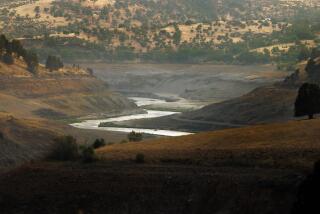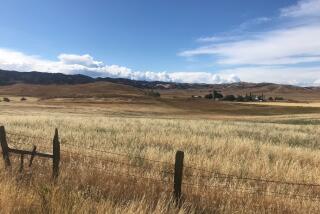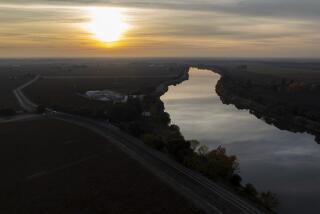China Will Tame the Yangtze : Environment: Beijing gives the go-ahead to a controversial dam. It is intended to control flooding and provide electricity.
BEIJING — China will move forward with a controversial plan to build a giant dam on the Yangtze River, flooding the spectacular Three Gorges, the official New China News Agency reported Wednesday.
The long-debated project carries huge costs--and the promise of huge benefits. It would partially destroy China’s greatest natural landmark--a stretch of racing water, sharp cliffs and soaring green peaks treasured by Chinese in the way Americans love the Grand Canyon. The homes, factories and farmland of 725,000 people would be submerged. Total expenses would be at least $10 billion, perhaps double that amount.
But the proposed dam--475 feet high and 1.6 miles long--would be the world’s biggest hydroelectric producer. It could save tens of thousands of lives by controlling the devastating floods that have hit the Yangtze over the centuries.
The cliffs and peaks of the 120-mile-long Three Gorges would remain. But they would no longer soar so high above the water, since the dam would create a 350-mile lake that also would let heavy barges reach the heart of China.
“It is necessary to launch the project soon for the sake of the long-term stability of the national economy as a whole, and the safety of the lower and middle reaches of the Yangtze,” Wan Li, chairman of the National People’s Congress, China’s rubber-stamp Parliament, declared in announcing the decision. Wan said that the dam should be listed among the “key projects” for China’s 10-year development program for 1991-2000.
Plans call for production of electricity to begin 12 years after the start of construction, with completion of the project scheduled to take 18 years.
Wan made his comments while formally presenting the dam proposal to the 153-member Standing Committee of the National People’s Congress, meeting in Beijing. Major proposals are presented only after China’s top Communist Party leaders have decided they should be approved.
With the two bodies under absolute Communist control, the chances of rejection are tiny. But formal approval could be put off until the full National People’s Congress meets next spring.
Whether to build the Three Gorges Dam is one of the few issues in China that has been open to genuine debate. This is because of the project’s importance, the deep emotions it raises, its technical nature and the difficulty of being sure what course is truly best for China.
Opponents argue that the dam costs too much, will cause too much damage to China’s most famous scenic spot, carries too much risk of other environmental damage and requires the relocation of too many people. Critics say that problems of silting have been underestimated and that the dam would be too attractive a target to enemy bombing or missile attack in a war.
Qian Weichang, a scientist who is a vice chairman of the Chinese People’s Political Consultative Conference, a powerless advisory body to the Chinese government, published an article this spring pleading that the dam not be built, arguing that more than 100 million people would die if the structure were destroyed in war.
But most critics have been silenced since the June 4, 1989, crackdown on pro-democracy demonstrations in Beijing and a subsequent wave of political repression. Premier Li Peng, the man most hated by the Tian An Men protesters, is widely viewed as one of the leading backers of the dam.
Journalist Dai Qing, imprisoned for 10 months for allegedly sympathizing with the pro-democracy protests, had emerged earlier in 1989 as the leader of environmentalists opposed to the project. “There is only one Yangtze River. Mankind should not abuse it,” Dai declared at an anti-dam news conference in early 1989.
Dai now is maintaining a low profile in Beijing while trying to win permission from Chinese authorities to accept a Nieman Fellowship at Harvard University.
In the current political environment, opposition to the dam comes dangerously close to rebellion against the hard-line leaders in Beijing. Thus, it would be surprising if environmentalists and other critics can mount an effective challenge to the project.
The 725,000 people who live in areas to be flooded have no voice in the decision. Foreign journalists who have visited the area have generally found that most people seem willing to be relocated so long as they can expect a rise in living standards.
Advocates of the dam insist that the advantages vastly outweigh the costs.
The project would generate 18 million kilowatts of electricity, 40% more than the capacity of Brazil’s Itaipu Dam, now the world’s largest hydroelectric producer. This could ease electricity shortages and promote development throughout the Yangtze River Valley.
For most of this century, China’s leaders have dreamed of modernizing China with the help of a Three Gorges Dam. The project was first proposed in 1921 by Sun Yat-sen, leader of China’s 1911 revolution against the Qing Dynasty. The project was seriously considered in the 1950s, with the help of Soviet engineers who assisted in feasibility studies. It was postponed due to China’s poverty and lack of technical expertise.
More to Read
Sign up for Essential California
The most important California stories and recommendations in your inbox every morning.
You may occasionally receive promotional content from the Los Angeles Times.









